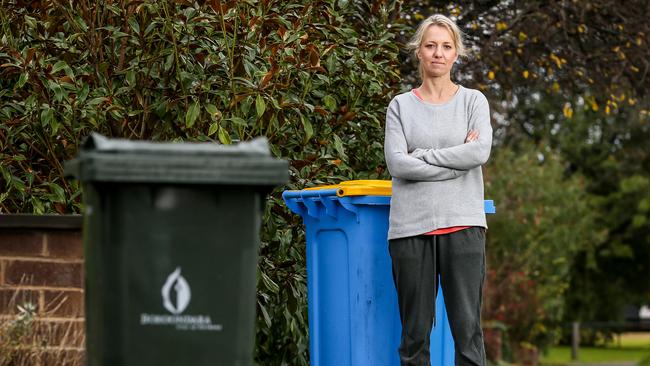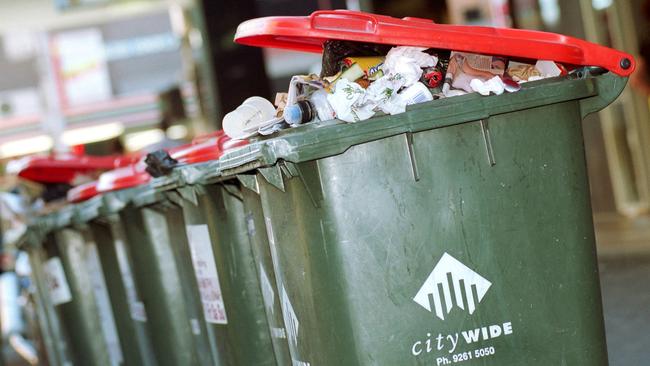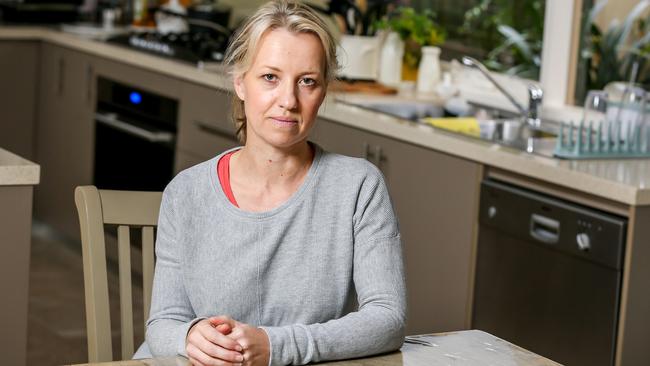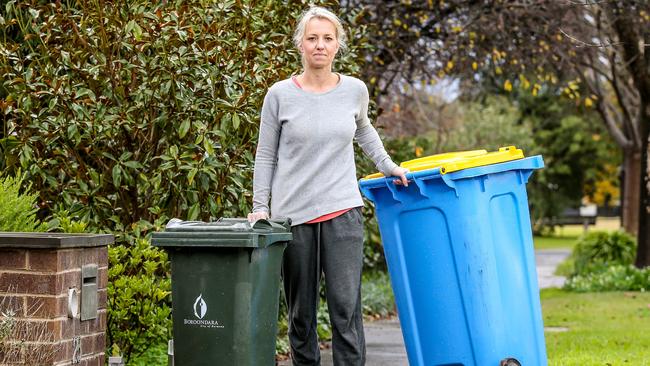Roads, rubbish, other essential services languish as some councils spend up on admin, governance
Many Victorian councils are spending a pittance on the services that matter to ratepayers as they splash cash on themselves. See how your council spends your rates.

VIC News
Don't miss out on the headlines from VIC News. Followed categories will be added to My News.
Just $15 out of every $100 spent by Melbourne’s councils is used to fix up local roads and collect the rubbish.
A Herald Sun investigation has found metropolitan councils are spending $247 per resident on governance — compared to $185 on their core business of roads and rubbish.
Ratepayers are now demanding an independent probe of council spending and new rules to make local governments spend enough money delivering essential services.
The worst examples, according to Essential Services Commission data, include:
MELBOURNE and Dandenong councils failing to properly maintain 20 per cent of their local roads.
DAREBIN and Frankston councils only deciding a third of planning applications within the required time frames.
BANYULE council not collecting 18 out of every 10,000 bins — triple the metropolitan average.
Figures in graph a percentage of council spend.
The revelations come in the wake of a scathing Auditor-General’s investigation that found ratepayers in four areas were slugged with the cost of boozy lunches, parking fines, shots of alcohol and trips to wineries and beauty spas by councillors and staff.
Local Government Minister Adem Somyurek said: “Council spending must reflect the needs of their communities”
The Herald Sun can reveal he is now writing to all 79 Victorian councils to urge them to implement the Auditor-General’s recommendations, including forcing councillors to provide evidence to support their personal expense claims which would then be published online.
The City of Melbourne spends 47.5 per cent of its budget on business and economic services — such as planning and tourism — but just 2.3 per cent on waste management, the lowest proportion of any council.

Smaller regional councils are spending as much as 30 per cent of their money on improving local roads and bridges — although their road networks are more than four times bigger than metropolitan councils, which typically maintain about 500km.
COUNCILS ‘OUT OF STEP’
Ratepayers Victoria spokesman Dean Hurlston called on the state government to launch a statewide probe of council spending.
“Councils are not aligned at all with community expectations of responsible, appropriate and transparent spending of ratepayers’ money,” Mr Hurlston said.
“What we are seeing across most council areas is large capital works programs for ambitious projects that deliver little to no benefit to the majority of ratepayers.”
He said Mr Somyurek should set guidelines to dictate how much money councils needed to spend on roads, rubbish and other key services, while also requiring all major projects to be backed up with business cases which justify the spending.
Opposition local government spokesman Tim Smith said ratepayers were telling him they were “sick of councils wasting money on issues that have nothing to do with local government”.
“Victorians want to see councils get back to basics: fixing roads and footpaths, collecting rubbish, not wasting ratepayers’ money,” he said.
In Boroondara — where just 59.7 per cent of planning applications are decided on time — the council last week locked in a $129 million “customer first program” after paying $11.7 million for a new website.

Melissa Jeuniewic, who has lived in the area for most of her life, said it was “outrageously expensive” and the council had not been transparent about why the program was needed.
“My street has a lot of footpaths that are so damaged,” she said.
“Why can’t they just fix our footpaths? This is why people wonder where their money is going.”
BIGGEST HITS
Households in 11 local council areas are being forced to cough up average annual rates of more than $2000.
New figures obtained by the Herald Sun reveal residents in Melbourne are copping the highest rates in the state, averaging $2489 this financial year.
Maribyrnong is not far behind, charging households an average of $2440, while Hobsons Bay residents in the city’s southwest are being stung $2346.
The data, compiled by the state government, reveals some outer suburban and regional councils are also raking in average rates payments above $2000.
They include Nillumbik Shire and Strathbogie Shire north of Melbourne, the Borough of Queenscliffe, Corangamite Shire and Surf Coast Shire in the state’s southwest, as well as Mildura Rural City and Greater Shepparton City.

SMALLEST BILLS
The smallest average annual rates bill across the state’s 79 councils this year was in Loddon Shire, at $1206 per household.
Stonnington has some of the state’s most expensive homes in leafy Toorak, but its average annual rates bill is only $1414, reduced by less exclusive areas and public housing estates.
A recent review by the Essential Services Commission found that rate-capping had slowed sharp increases in annual rates bills — although property revaluations still left many households having to pay higher charges.
“Our analysis shows the growth in per property rates revenue has fallen from an average of 5.2 per cent per year in the three years prior to rate capping to 2.4 per cent in 2016-17 and 1.9 per cent in 2017–18, roughly in line with the rate caps,” commission chair Ron Ben-David said.
The state government has launched a major review of the local government rating system, probing rates and charges, available exemptions and concessions — including for farm land — and the autonomy given to councils to adapt rating systems to local factors.
But the cap on rate increases is not part of the probe and will remain in place. A report is expected to be delivered to the government by March next year.



